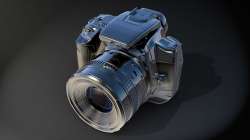This camera can take 1 trillion frames per second: Know how it works
A new ultrafast camera has been developed, which can take 1 trillion frames per second. Read on to know more

Researchers have developed a new camera that can take up to 1 trillion pictures per second of transparent objects. The camera technology, which is known as phase-sensitive compressed ultrafast photography (pCUP), can take video not just of transparent objects but also of more ephemeral things like shockwaves and possibly even of the signals that travel through neurons.
"As signals travel through neurons, there is a minute dilation of nerve fibres that we hope to see. If we have a network of neurons, maybe we can see their communication in real-time," said study researcher Lihong Wang from California Institute of Technology in the US.
"In addition, because the temperature is known to change phase contrast, the system may be able to image how a flame front spreads in a combustion chamber," he added.
The camera builds on previous research, in which the research team used the technology to capture light travelling in slow motion.
According to the study, published in the journal Science Advances, his new imaging system combines the high-speed photography system he previously developed with an old technology, phase-contrast microscopy, that was designed to allow better imaging of objects that are mostly transparent such as cells, which are mostly water.
Phase-contrast microscopy, invented nearly 100 years ago by Dutch physicist Frits Zernike, works by taking advantage of the way that light waves slow down and speed up as they enter different materials.
For example, if a beam of light passes through a piece of glass, it will slow down as it enters the glass and then speed up again as it exits. Those changes in speed alter the timing of the waves.
With the use of some optical tricks it is possible to distinguish light that passed through the glass from light that did not, and the glass, though transparent, becomes much easier to see.
"What we've done is to adopt standard phase-contrast microscopy so that it provides very fast imaging, which allows us to image ultrafast phenomena in transparent materials," said Wang.
The fast-imaging portion of the system consists of something Wang calls lossless encoding compressed ultrafast technology (LLE-CUP).
Unlike most other ultrafast video-imaging technologies that take a series of images in succession while repeating the events, the LLE-CUP system takes a single shot, capturing all the motion that occurs during the time that shot takes to complete.
Since it is much quicker to take a single shot than multiple shots, LLE-CUP is capable of capturing motion, such as the movement of light itself, that is far too fast to be imaged by more typical camera technology.
In the study, the research team demonstrate the capabilities of pCUP by imaging the spread of a shockwave through water and of a laser pulse travelling through a piece of crystalline material.